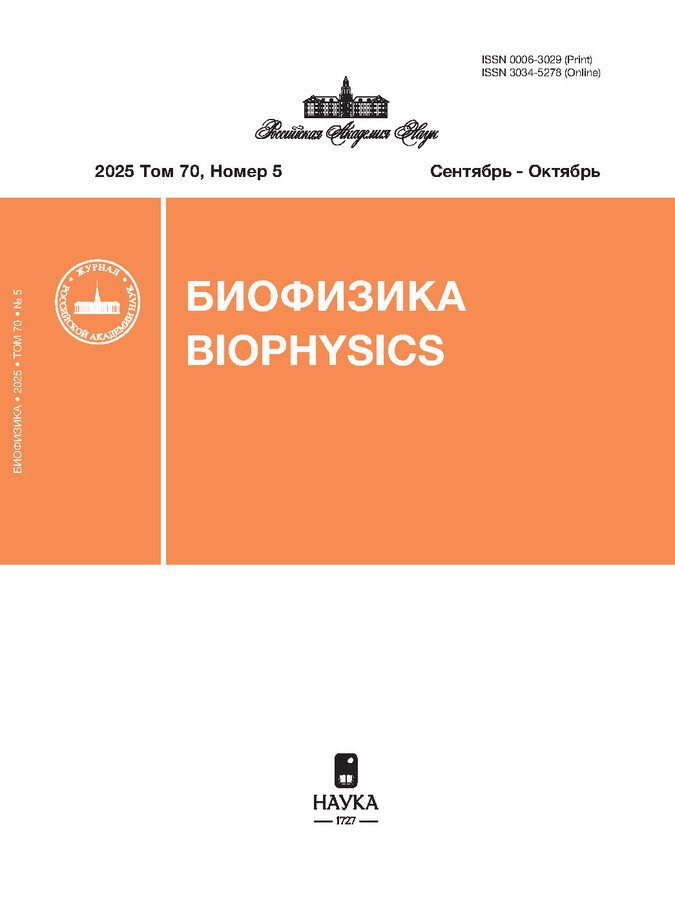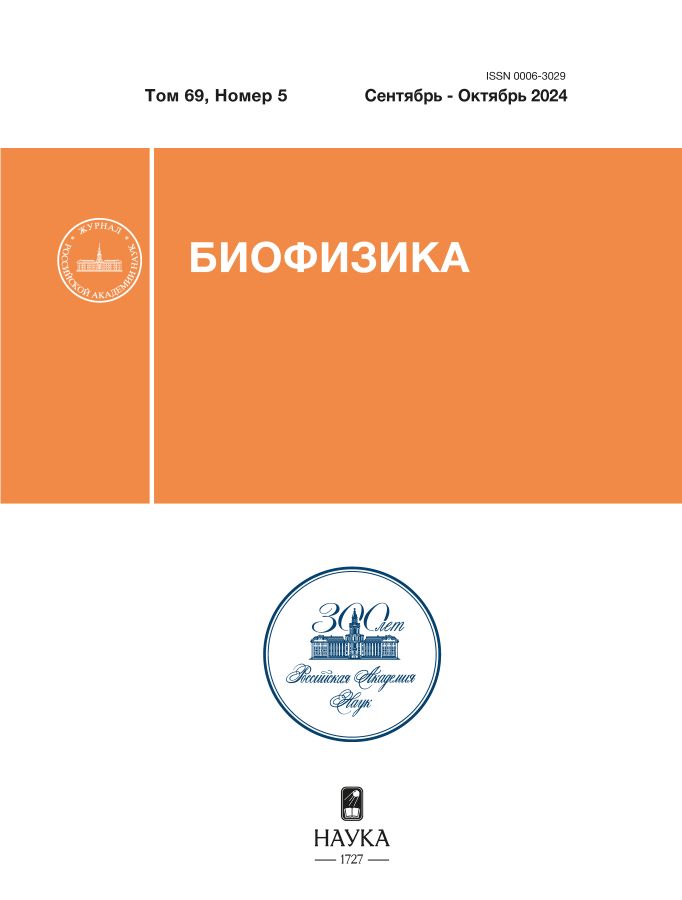ВЛИЯНИЕ ПОЛИСАХАРИДА ИЗ Helianthus tuberosus L. НА АНТИПРОЛИФЕРАТИВНУЮ АКТИВНОСТЬ ПРОИЗВОДНОГО N-ГЛИКОЗИДА ИНДОЛО[2,3-а]КАРБАЗОЛА ЛХС-1269
- Авторы: Киселева М.П1, Голубева И.С1, Дерягина В.П1, Ланцова А.В1, Эктова Л.В1, Корнюшенков Е.А1, Борисова Л.М1, Генералов Е.А2
-
Учреждения:
- Национальный медицинский исследовательский центр онкологии имени Н.Н. Блохина Минздрава России
- Московский государственный университет имени М.В. Ломоносова
- Выпуск: Том 69, № 5 (2024)
- Страницы: 1109-1117
- Раздел: Биофизика cложныx cиcтем
- URL: https://rjonco.com/0006-3029/article/view/676139
- DOI: https://doi.org/10.31857/S0006302924050164
- EDN: https://elibrary.ru/MIXHCU
- ID: 676139
Цитировать
Полный текст
Аннотация
Об авторах
М. П Киселева
Национальный медицинский исследовательский центр онкологии имени Н.Н. Блохина Минздрава России
Email: marina-kiselyova@mail.ru
Москва, 115522, Россия
И. С Голубева
Национальный медицинский исследовательский центр онкологии имени Н.Н. Блохина Минздрава РоссииМосква, 115522, Россия
В. П Дерягина
Национальный медицинский исследовательский центр онкологии имени Н.Н. Блохина Минздрава РоссииМосква, 115522, Россия
А. В Ланцова
Национальный медицинский исследовательский центр онкологии имени Н.Н. Блохина Минздрава РоссииМосква, 115522, Россия
Л. В Эктова
Национальный медицинский исследовательский центр онкологии имени Н.Н. Блохина Минздрава РоссииМосква, 115522, Россия
Е. А Корнюшенков
Национальный медицинский исследовательский центр онкологии имени Н.Н. Блохина Минздрава РоссииМосква, 115522, Россия
Л. М Борисова
Национальный медицинский исследовательский центр онкологии имени Н.Н. Блохина Минздрава РоссииМосква, 115522, Россия
Е. А Генералов
Московский государственный университет имени М.В. ЛомоносоваМосква, 119991, Россия
Список литературы
- Heidkamp J., Scholte M., Rosman C., Manohar S., Fütterer J. J., and Rovers M. M. Novel imaging techniques for intraoperative margin assessment in surgical oncology: A systematic review. Int. J. Cancer, 149 (3), 635–645 (2021). doi: 10.1002/ijc.33570
- Cha J. H., Chan L. C., Song M. S., and Hung M. C. New approaches on cancer immunotherapy. Cold Spring Harb. Perspect. Med., 10 (8), a036863 (2020). doi: 10.1101/cshperspect.a036863
- Анисимов М. Н. и Гудимчук Н. Б. «Зоопарк» ингибиторов динамики микротрубочек. Природа, № 8, 3– 12 (2020). doi: 10.7868/S0032874X20080013
- Dona Lemus O. M., Cao M., Cai B., Cummings M., and Zheng D. Adaptive radiotherapy: next-generation radiotherapy. Cancers, 16 (6), 1206 (2024). doi: 10.3390/cancers16061206
- Karati D. and Kumar D. A Comprehensive review on targeted cancer therapy: new face of treatment approach. Curr. Pharm. Des., 29 (41), 3282–3294 (2023). doi: 10.2174/0113816128272203231121034814
- Siegel R. L., Giaquinto A. N., and Jemal A. Cancer statistics, 2024 [erratum in CA Cancer J. Clin., 74 (2), 203 (2024)]. CA Cancer J. Clin., 74 (1), 12–49 (2024). doi: 10.3322/caac.21820
- Yu Y., Shen M., Song Q., and Xie J. Biological activities and pharmaceutical applications of polysaccharide from natural resources: a review. Carbohydr. Polym., 183, 91– 101 (2018). doi: 10.1016/j.carbpol.2017.12.009
- Generalov E. A. Antimetastatic and tumor growth inhibition activity of polysaccharide from Helianthus tuberosus L. ARC J. Cancer Sci., 1 (1), 5–10 (2015). doi: 10.20431/2455-6009.0101002
- Du H., Jin X., Jin S., Zhang D., Chen Q., Jin X., Wang C., Qian G., and Ding H. Anti-leukemia activity of polysaccharide from sargassum fusiforme via the pi3k/akt/bad pathway in vivo and in vitro. Mar. Drugs, 21 (5), 289 (2023). doi: 10.3390/md21050289.
- Li M., Liu Y., Zhang H., Liu Y., Wang W., You S., Hu X., Song M., Wu R., and Wu J. Anti-cancer potential of polysaccharide extracted from Polygonatum sibiricum on HepG2 cells via cell cycle arrest and apoptosis. Front. Nutr., 9, 1054565 (2022). doi: 10.3389/fnut.2022.938290
- Yue L., Cui H., Li C., Lin Y., Sun Y., Niu Y., Wen X., and Liu J. A polysaccharide from Agaricus blazei attenuates tumor cell adhesion via inhibiting E-selectin expression. Carb. Pol., 88 (4), 1326–1333 (2012). doi: 10.1016/j.carbpol.2012.02.015
- Cao R., Jin W., Shan Y., Wang J., Liu G., Kuang S., and Sun C. Marine bacterial polysaccharide EPS11 inhibits cancer cell growth via blocking cell adhesion and stimulating anoikis. Mar. Drugs, 16 (3), 85 (2018). doi: 10.3390/md16030085.
- Ping Z., Xu H., Liu T., Huang J., Meng Y., Xu X., Li W., and Zhang L. Anti-hepatoma activity of the stiff branched β-d-glucan and effects of molecular weight. J. Mater. Chem. B, 4 (26), 4565–4573 (2016). doi: 10.1039/c6tb01299j.
- Jiang Z., Chi J., Li H., Wang Y., Liu W., and Han B. Effect of chitosan oligosaccharide-conjugated selenium on improving immune function and blocking gastric cancer growth. Eur. J. Pharmacol., 891, 173673 (2020). doi: 10.1016/j.ejphar.2020.173673.
- Guo R., Chen M., Ding Y., Yang P., Wang M., Zhang H., He Y., and Ma H. Polysaccharides as potential anti-tumor biomacromolecules – a review. Front. Nutr., 9, 838179 (2022). doi: 10.3389/fnut.2022.838179
- Li W., Song K., Wang S., Zhang C., Zhuang M., Wang Y., and Liu T. Anti-tumor potential of astragalus polysaccharides on breast cancer cell line mediated by macrophage activation. Mater. Sci. Eng. C. Mater. Biol. Appl., 98, 685– 695 (2019). doi: 10.1016/j.msec.2019.01.025.
- Bao X., Yuan H., Wang C., Liu J., and Lan M. Antitumor and immunomodulatory activities of a polysaccharide from Artemisia argyi. Carbohydr Polym., 98, 1236–1243 (2013). doi: 10.1016/j.carbpol.2013.07.018
- Liu Y., Zhang L., Zhu X., Wang Y., Liu W., and Gong W. Polysaccharide Agaricus blazei Murill stimulates myeloid derived suppressor cell differentiation from M2 to M1 type, which mediates inhibition of tumour immune-evasion via the toll-like receptor 2 pathway. Immunology, 146 (3), 379–391 (2015). doi: 10.1111/imm.12508.
- Khan T., Date A., Chawda H., and Patel K. Polysaccharides as potential anticancer agents – a review of their progress. Carbohydr. Polym., 210, 412–428 (2019). doi: 10.1016/j.carbpol.2019.01.064
- Generalov E. A. Study of the structure and immunoenhancing activity of glucan ADVA. Moscow Univ. Phys., 68, 470–477 (2013). doi: 10.3103/S0027134913060040
- Pang G., Wang F., and Zhang L. W. Dose matters: direct killing or immunoregulatory effects of natural polysaccharides in cancer treatment. Carbohydr. Polym., 195, 243– 256 (2018). doi: 10.1016/j.carbpol.2018.04.100.
- Gao X. and Homayoonfal M. Exploring the anti-cancer potential of Ganoderma lucidum polysaccharides (GLPs) and their versatile role in enhancing drug delivery systems: a multifaceted approach to combat cancer. Cancer Cell Int., 23 (1), 324 (2023). doi: 10.1186/s12935-023-03146-8.
- Safonova E. A., Lopatina K. A., Razina T. G., Zueva E. P., Fedorova E. P., Gur'ev A. M., and Belousov M. V. Modification of the myelotoxic and antitumor effects of polychemotherapy by polysaccharides from Tussilago farfara L. Bull. Exp. Biol. Med., 166 (2), 197–200 (2016). doi: 10.1007/s10517-018-4313-5
- Zenkov R. G., Ektova L. V., Vlasova O. А., Belitskiy G. А., Yakubovskaya M. G., and Kirsanov K. I. Indolo[2,3a]carbazoles: diversity, biological properties, application in antitumor therapy. Chem. Heterocyc. Comp., 56 (6), 644–658 (2020). doi: 10.1007/s10593-020-02714-4
- Kozin D. A., Shprakh Z. S., Reshetnyak V. Yu., Nesterova O. V., Avertseva I. N., and Rodionova G. M. Indolo[2,3-a]carbazole derivatives with antitumor activity and instrumental methods for their investigation. Drug Dev. Registr., 9 (4), 15–20 (2020). doi: 10.33380/2305-2066-2020-9-4-128-135
- Kolpaksidi A. P., Dmitrieva M. V., Yarosh I. V., and Krasnyuk I. I. Antitumor drugs based on indolocarbazol derivatives. Pharmacy & Pharmacol., 9 (4), 252–265 (2021). doi: 10.19163/2307-9266-2021-9-4-252-265
- Éktova, L. V., Goryunova, O. V., Eremina, V. A., Tikhonova N. I., and Medvedeva L. A. An improved method for the synthesis of the of indole[2,3-a]pyrrolo[3,4-c]carbazole-5,6-dione N-glycosides and their cytotoxic activity. Pharm. Chem. J., 53, 604–609 (2019). doi: 10.1007/s11094-019-02046-4
- Николаева Л. Л., Ланцова А. В., Санарова Е. В., Орлова О. Л., Оборотов А. В., Игнатьева Е. В., Шпрах З. С., Кульбачевская Н. Ю. и Коняева О. И. Разработка состава и технологии получения модели инъекционной формы производного индолокарбазола. Хим.-фармацевт. журн., 57 (6), 42–46 (2023). doi: 10.30906/0023-1134-2023-57-6-42-46
- Vartanian A., Golubeva I., and Shprakh Z. Is vasculogenic mimicry a hallmark of an aggressive tumor? In: Horiz. Cancer Res. (Nova Science Publishers, Inc., 2017), v. 65, pp. 13–33.
- Vartanian A., Misyurin V. A., Baryshnikova M. A., and Shprakh Z. Inhibitor of vasculogenic mimicry restores sensitivity of resistant melanoma cells to DNA-damaging agents. Melanoma Res., 27 (1), 8–16 (2017). doi: 10.1097/CMR.0000000000000308
- Generalov E. A. Water-soluble polysaccharide from Heliantnus tuberosus L.: radioprotective, colony-stimulation and immunomodulation activities. Biophysics, 60 (1), 73– 79 (2015).
- Generalov E. and Yakovenko L. Receptor basis of biological activity of polysaccharides. Biophys. Rev., 15, 1209–1222 (2023). doi: 10.1007/s12551-023-01102-4
- Generalov E. A. and Afremova A. I. The Molecular mechanism of the action of Helianthus tuberosus L. polysaccharide. Biophysics, 61, 558–564 (2016). doi: 10.1134/S0006350916040096
- Kalitin N. N., Ektova L. V., Kostritsa N. S., Sivirinova A. S., Kostarev A. V., Smirnova G. B., Borisova Y. A., Golubeva I. S., Ermolaeva E. V., Vergun M. A., Babaeva M. A., Lushnikova A. A., and Karamysheva A. F. A novel glycosylated indolocarbazole derivative LCS1269 effectively inhibits growth of human cancer cells in vitro and in vivo through driving of both apoptosis and senescence by inducing of DNA damage and modulating of AKT/mTOR/S6K and ERK pathways. Chem. Biol. Interact., 364, 110056 (2022). doi: 10.1016/j.cbi.2022.110056
- Голубева И. С., Яворская Н. П., Эктова Л. В., Дмитриева М. В., Борисова Л. М., Еремина В. А., Тихонова Н. И. и Пугачева Р. Б. Противоопухолевая активность некоторых производных N-гликозидов индоло[2,3-a]карбазолов с углеводным остатком ксилозой. Рос. биотерапевтич. журн., 19 (4), 86–93 (2020). doi: 10.17650/1726-9784-2020-19-4-86-93
- Zenkov R. G., Vlasova O. A., Maksimova V. P., Fetisov T. I., Karpechenko N. Y., Ektova L. V., Eremina V. A., PopovaV. G., Usalka O. G., Lesovaya E. A., Belitsky G. A., Yakubovskaya M. G., and Kirsanov K. I. Molecular mechanisms of anticancer activity of N-glycosides of indolocarbazoles LCS-1208 and LCS-1269. Molecules, 26 (23), 7329 (2021). doi: 10.3390/molecules26237329
- Directive 2010/63/EU of the European Parliament and of the Council on the protection of animals used for scientific purposes. | FAOLEX n.d. URL: https://www.fao.org/faolex/results/details/ru/c/LEX-FAOC098296/ (accessed: 30.08.2023).
- Трещалина Е. М., Смирнова Г. Б. и Андронова Н. В. Коллекция опухолевых штаммов животных для экспериментальной химиотерапии злокачественных опухолей (Практическая медицина, М., 2022).
- Трещалина Е. М., Жукова О. С., Герасимова Г. К., Андронова Н. В. и Гарин А. М. Методические рекомендации по доклиническому изучению противоопухолевой активности лекарственных средств. В сб. Руководство по проведению доклинических исследований лекарственных средств. Под ред. А. Н. Миронова и др. («Гриф и К», М., 2012), ч. 1, сс. 640–657.
- Гольдберг Е. Д., Дыгай А. М. и Шахов В. П. Методы культуры ткани в гематологии (Изд-во Томского университета, Томск, 1992).
- Экспериментальная оценка противоопухолевых препаратов в СССР и США. Под ред. З. П. Софьиной, А. Б. Сыркина, А. Голдина и А. Кляйна (Медицина, М., 1980).
- Крицкая К. А., Петренко В. С., Ларюшкин Д. П., Наумов А. А. и Поцелуева М. М. Действие различных концентраций хелатора железа (дефероксамина), на клетки асцитной карциномы ЭРЛИХА in vitro. В сб. Матер. 22-й Международной Пущинской школы-конференции молодых ученых «Биология наука XXI века» (Синхробук, Пущино, 2018), с. 352. EDN: URYPPS
Дополнительные файлы











